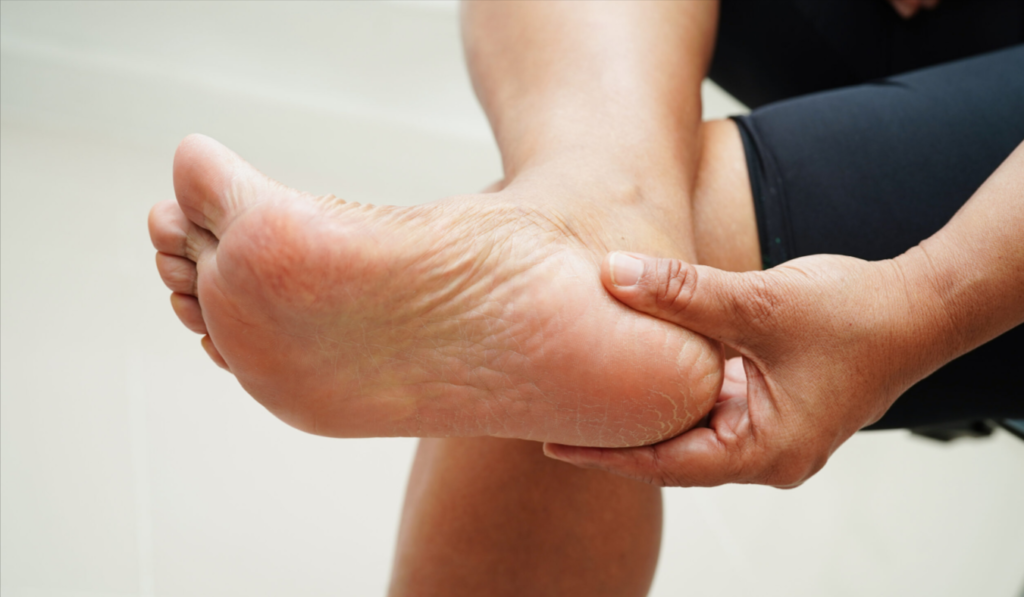Why Does My Heel Hurt? Common Cause and When to Seek Help

heel pain treatment Virginia Beach
Your heel endures all the impact of your walk. So no matter where you are walking: in your house, running errands, working every day on your feet, that small part of your body takes a lot of weight and impact. And once it begins to ache, it could mess with your entire routine.
Heel pain is not something you can endure. It can sometimes just be a temporary pain that is likely to go away with rest. Other times, it indicates something problematic hidden behind the surface. This requires care from a professional.
So, what is behind heel pain, and when is it worth seeing a podiatrist? Read on!
Plantar Fasciitis
Does your heel feel like it’s being stabbed during the first few steps of the morning? It is most likely the result of plantar fasciitis. The condition occurs when the thick tissue band that runs along the bottom of your foot becomes irritated or inflamed. This tissue is called the plantar fascia.
It occurs frequently in individuals who:
- Spend a lot of time standing
- Wear unsupportive footwear
- Suddenly increase their physical activity.
Left untreated, plantar fasciitis may be an ongoing, annoying issue. Luckily, heel pain treatment Virginia Beach, VA, can address plantar fasciitis early. This prevents it from becoming a stubborn problem that drags on for months or years.
Heel spurs
This is a calcium deposit that is formed on the underside of your heel bone. It develops due to long-term pressure on your foot, particularly untreated plantar fasciitis.
Heel spurs do not always trigger pain. But when they do, they tend to produce a stabbing pain in the heel after prolonged rest. An X-ray is necessary to confirm the diagnosis.
Achilles Tendinitis
Achilles tendon might be the issue when the pain is more towards the back of your heel, not on the bottom. It is a powerful tendon that joins your calf muscles to your back heel bone, and it may swell up as a result of:
- Overloading
- Using ill-fitted footwear
- An intense burst of activity.
Without treatment, Achilles tendinitis may advance to tiny tears, or even a burst, which is a much larger and pain-filled issue to correct.
Bursitis
Your heel contains small fluid-filled sacs known as bursae. They cushion your joints. However, repetitive movements or pressure at times may cause inflammation of these sacs. This results in heel bursitis.
Bursitis pain can be accompanied by a deep ache. It can become more intense when you wear specific shoes or even walk on a hard surface.
Nerve problems
At times, heel pain has nothing to do with muscles, ligaments, or bones whatsoever, and it is due to a nerve. Some complex conditions, such as tarsal tunnel syndrome, may also be the cause of burning, tingling, or a shooting pain in your heel.
Nerve-related heel pain can be very difficult to self-diagnose unless a professional examination is involved. It may also need different treatment than other heel conditions.
Stress fractures
When you have been running a lot or doing any other impact-related training, your heel bone may develop little cracks known as stress fractures. The nature of pain is normally gradual in onset and gets worse during exercise.
Since stress fractures may worsen with prolonged usage. It is essential to rest and have them examined by a podiatrist before they develop into a larger injury.
Sever’s disease
Does your child or teenager complain of heel pain, particularly when doing sports? This may be Sever’s Disease. It is an overuse ailment that damages the growth plate of the heelbone. It is normal at the time of growth spurts. It occurs when bones advance more rapidly than the muscles and tendons can adjust. Rest, stretching, and supportive footwear should help.
Arthritis
Heel pain may be caused by osteoarthritis and rheumatoid arthritis. Arthritis may attack the subtalar joint or the heel bone joints, causing:
- Stiffness
- Swelling
- P
Pain in the heel associated with arthritis may intensify in the morning or after sitting. It may also increase after an activity. Mountain Spring podiatry specialists can help you address such problems.
Fat pad atrophy
There is a natural shock-absorbing cushion of fat on the underside of your heel bone, which cuts down when you walk. Gradually, that pad may become thin: a syndrome known as fat pad atrophy. It exposes the bone to more pressure.
This form of heel pain presents itself as a sensation of walking on a bone or having a pebble under your foot with every step you take. It is most likely to occur with age but may also occur during repeated high-impact exercise.
Wrapping up
Heel pain is not a single condition. It is a symptom that can be caused by numerous issues, including inflammation, trauma and injury, alterations in bones, and even skin issues. All these causes are treated differently, so the solution is to get to the bottom of why your heel hurts. The better it is properly diagnosed, the sooner you will be able to identify the corresponding treatment and recover.



